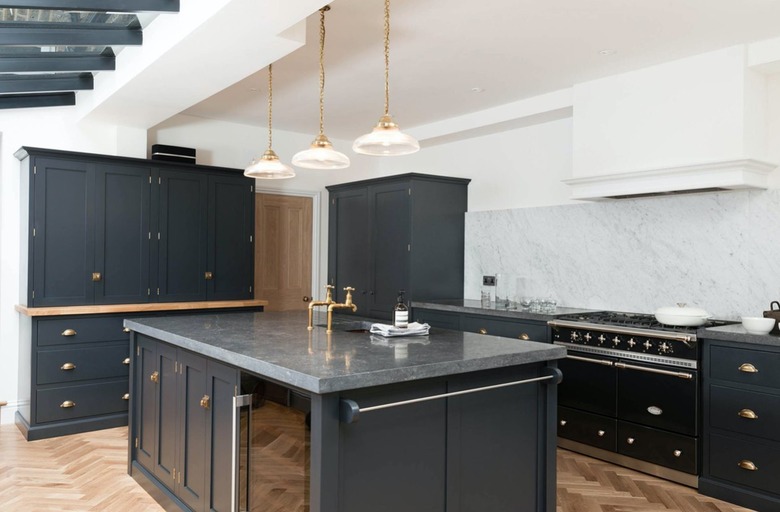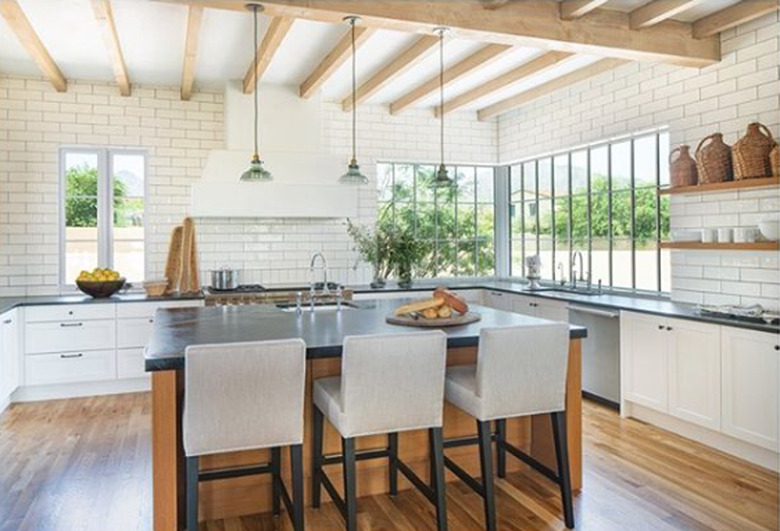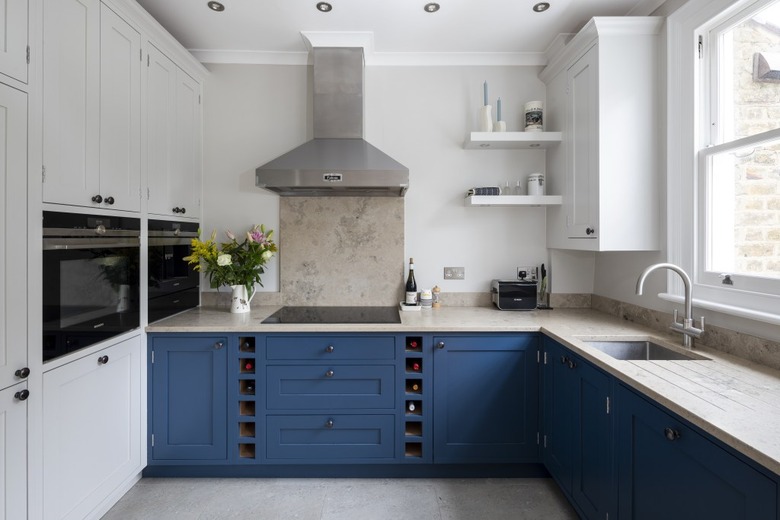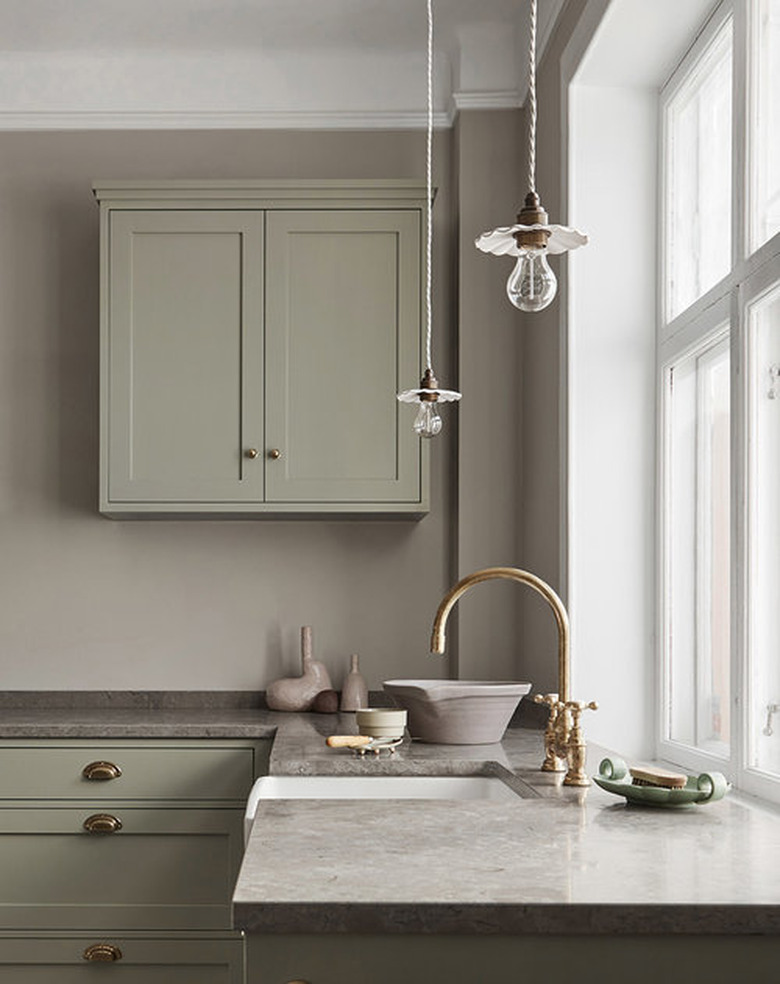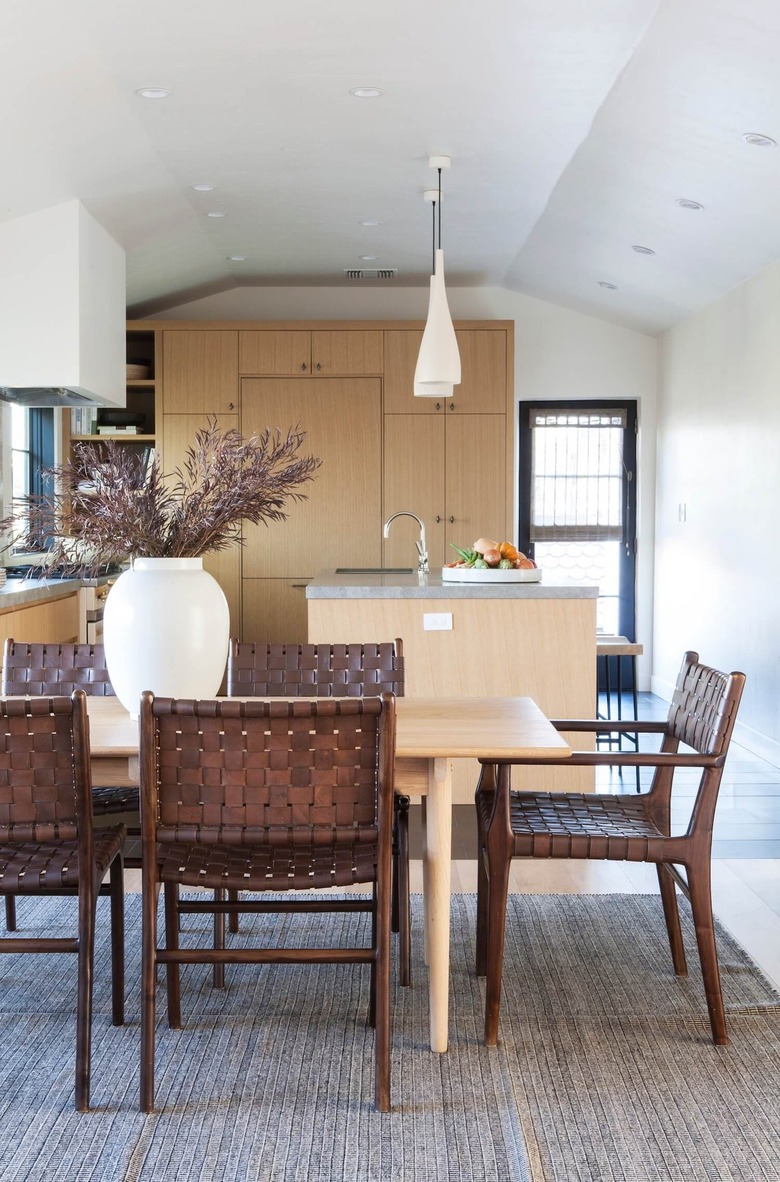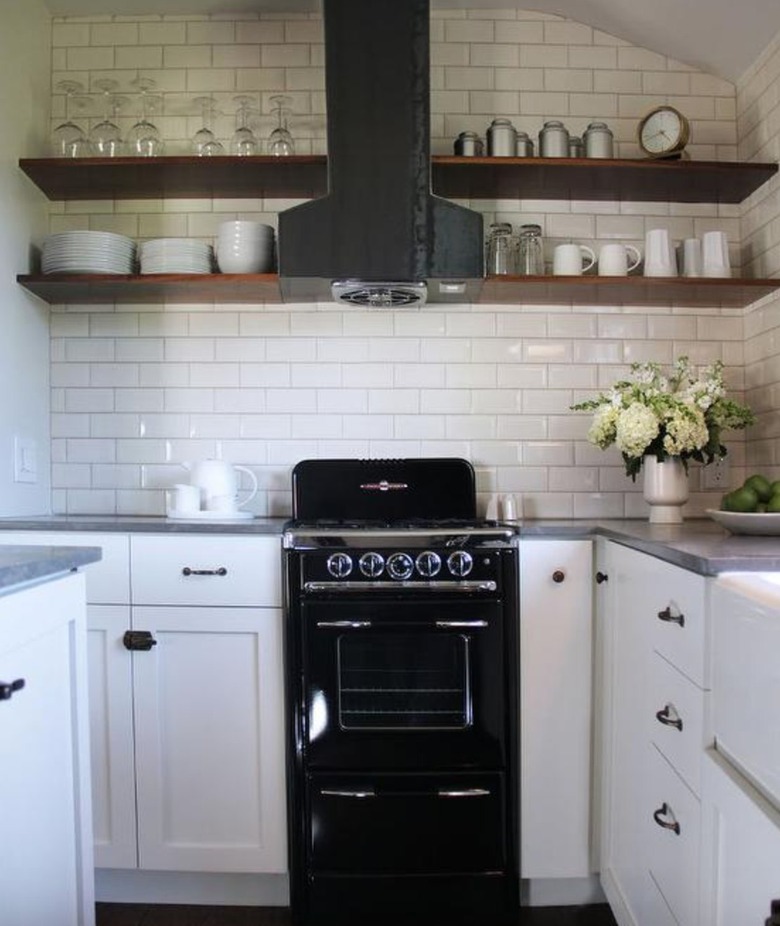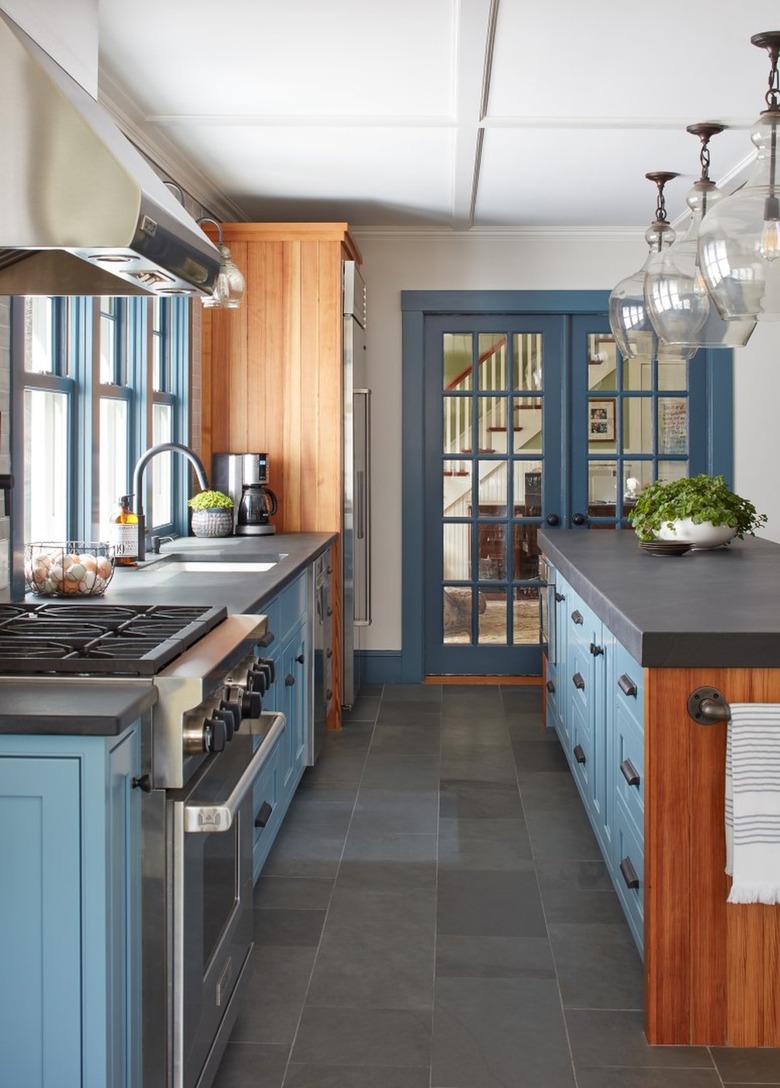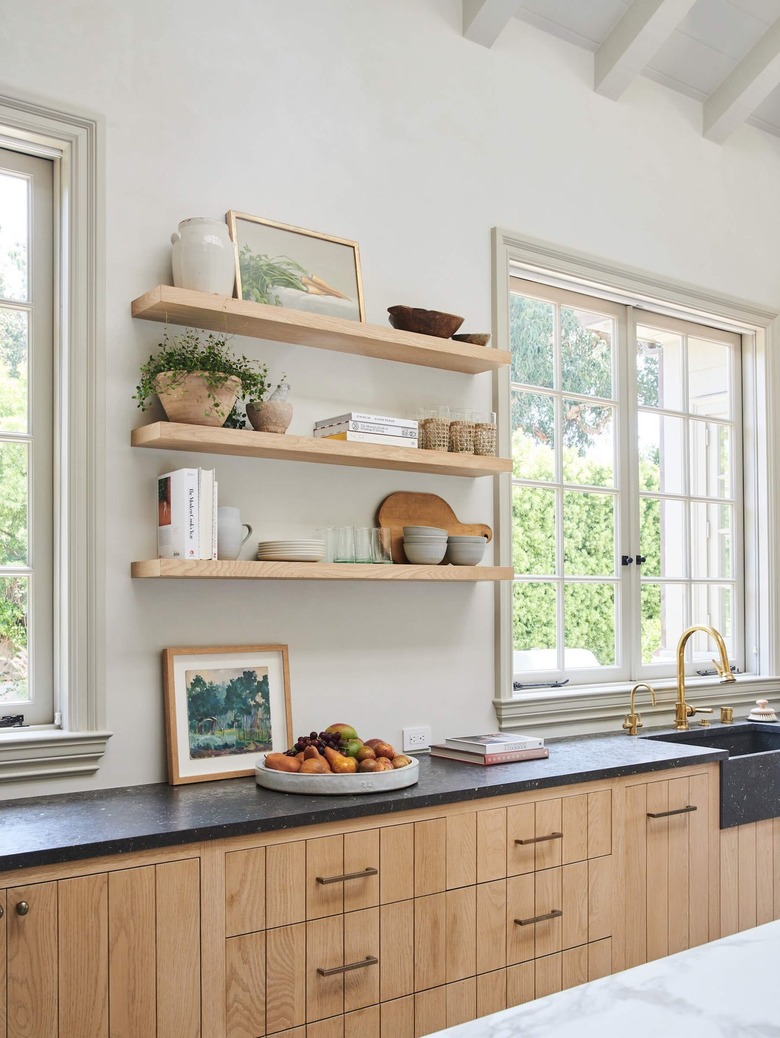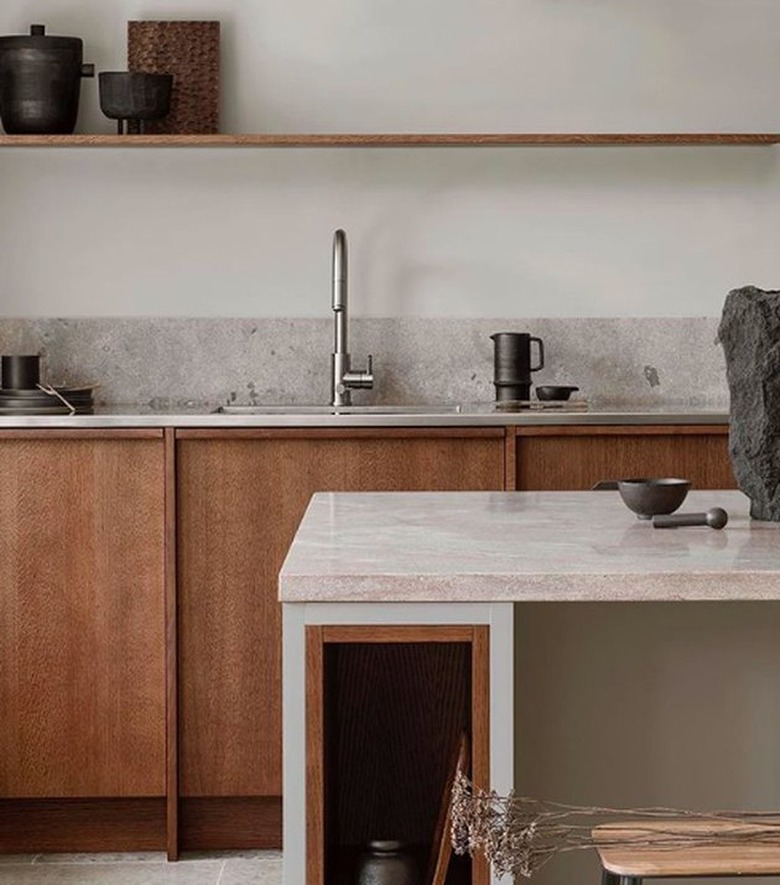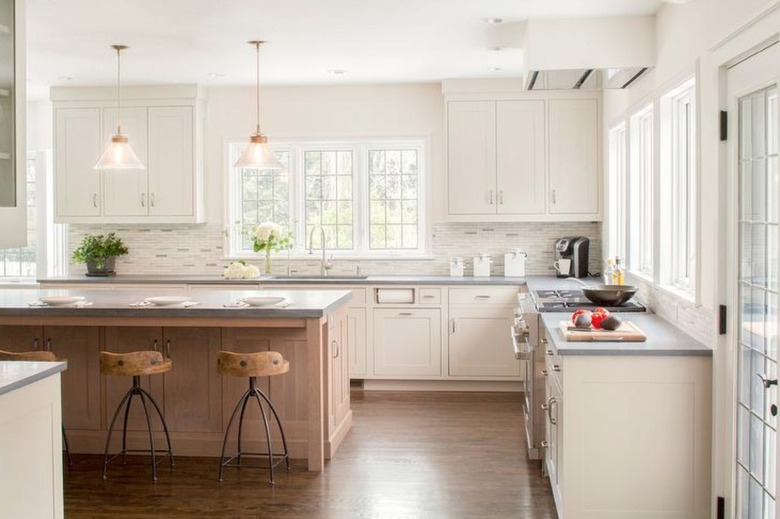10 Limestone Kitchen Countertop Ideas: Here's What You Need To Know
We may receive a commission on purchases made from links.
There's nothing quite like a gorgeous countertop material to punctuate a great kitchen design. And while we'll always be drawn to the beauty that marble offers, factors such as budget, maintenance requirements, and aesthetics might be pushing you in a different direction. Luckily, there are plenty of other options to think about. For example, limestone is one alternative that's often overlooked by homeowners but is definitely worth considering for your kitchen remodel.
What exactly is limestone, you ask?
What
exactly is limestone, you ask?
Limestone is a sedimentary rock comprised predominantly of skeletal deposits of marine organisms found in warm, clear, shallow waters in and around the Caribbean Sea, Indian Ocean, and the Persian Gulf. Like other types of natural stone (as opposed to hardier, engineered stone), limestone is softer and more porous, requiring regular maintenance and upkeep to preserve its beauty.
Limestone is a beautiful option for floors and counters and is available in many neutral shades ranging from pale white to charcoal gray. One quality that distinguishes limestone from other materials is the subtle yet visible inclusion of fossils in some varieties, which gives the stone a unique textural quality.
Where can limestone be used?
Where
can limestone be used?
Limestone has been used in buildings and structures for centuries (you've heard of the Great Pyramids of Giza, right?), so its durability is undisputed. However, it's softer and more porous than marble and granite which means that it's important to consider where you are installing it — avoid high-splash zones (behind a stove, sink, or bar area, for example). And you'll need to be prepared to wipe up spills as soon as they happen to avoid permanent stains. If you love the look of limestone and you are willing to be diligent with your maintenance, then we say: Go for it.
How to Care for Limestone
How to Care for Limestone
Limestone is a very porous and chemically sensitive stone. Like all natural stones — soapstone, marble, and granite to name a few — proper care is necessary to keep your limestone counters looking beautiful and clean. Before installation, make sure they are professionally sealed and then continue to have them sealed once or twice a year. That's right, at least once a year. Because limestone is highly porous (driving that point home here) it absorbs spills quickly and must be cleaned with natural stone cleaners, or a specific limestone cleaning solution (nothing acidic).
Due to its soft properties, to prevent scratches you need to use a cutting board when chopping and a microfiber cloth to wipe up spills (immediately). Also, limestone isn't heat-resistant so you can't transfer dishes directly from the oven or stove to the counter. Dark colors show scratches more than lighter colors; however lighter colors stain more easily. If it sounds like limestone countertops take more than just a bit of thought and upkeep to maintain, you're correct. However, if you're the type of person that takes pride in keeping your work surfaces clean, and you have the time and money to keep up with their appearance, then limestone countertops might be right for you.
Pros and Cons of Limestone Countertops
Pros:
- Limestone is a beautiful and timeless option for a variety of interior design styles, including traditional, contemporary, and Mediterranean.
- With proper care and maintenance, limestone countertops can provide years of enjoyment.
- Limestone is available in a range of neutral colors and patterns and has one-of-a-kind attributes such as fossil and shell impressions, making it a unique option full of character.
- It's heat resistant.
Cons:
- Limestone is a high-maintenance material that requires regular upkeep to preserve its beauty.
- It's soft, making it prone to scratches.
- It's highly porous, making it susceptible to staining.
- Limestone counters aren't heat resistant.
10 Limestone Countertop Ideas
1. Go for a farmhouse vibe.
Limestone countertops paired with elongated subway tile bring a welcome spin to the more common marble/subway tile combination. The Refined Group enhanced the ceiling in this modern farmhouse kitchen with exposed wood beams while open shelves and plenty of wood accent pieces add warmth and a rustic touch. All those windows don't hurt either!
2. Add some color.
Limestone countertops in a natural color add interest to white walls while toning down the vibrant blue lower cabinets. The visible fossils add movement to the stone slab behind the stove. The team over at Chris Chapman keeps the overall design streamlined and practical.
3. Keep it neutral.
This classic kitchen by Nordiska Kök, a design firm based in Sweden, proves that muted sage-green shaker cabinets and greige limestone countertops are a winning combination. A set of mini pendant lights and brass fittings are a nice finishing touch for a sophisticated, timeless look with plenty of soul.
4. Elevate a coastal scheme.
Part of the beauty of limestone countertops is that they can work with any design style, from farmhouse to contemporary. The team over at DISC Interiors put the natural material to work in this coastal-inspired kitchen, and the result is stunning. A pair of white statement pendant lights and cool gray limestone counters beautifully balance the warm wood cabinets and flooring throughout.
5. Introduce subtle contrast.
When decorating a spatially challenged kitchen, opt for a classic color palette that you'll never tire of — like the gray, white, and black combo seen in this cozy setup by Amy Sklar. Gray limestone countertops introduce measured contrast and visual weight to a mostly white backdrop while a petite black range is a functional addition that also works as a focal point. A set of wood shelves add warmth and house everyday items without feeling cluttered.
6. Complement colored cabinets.
Add an edgy note to a soft color palette with dark flooring and countertops. Pale blue cabinets and trim pop against charcoal gray limestone and white walls in this traditional kitchen by Covenant LLC, while wood accents infuse warmth and texture. A box beam-inspired ceiling adds depth and visually expands the space by drawing the eye up.
7. Include just a touch.
If you love the look of limestone, but aren't sure you can commit to its upkeep, consider installing it sparingly in an isolated part of the kitchen. For example, in this cook space interior designer Amber Lewis relegated black limestone to the sink side of the kitchen which beautifully juxtaposes the surrounding marble countertops and oak cabinets.
8. Create a tonal look.
Consider making a subtle statement by selecting kitchen countertops that are in the same color family as the cabinets. It's a tonal choice that will add beauty without visual distraction. deVOL Kitchens paired thick-cut Belgian blue limestone with cabinetry painted in a similar hue for this timeless design. A Carrara marble backsplash, white wall paint, and plenty of natural light brighten up the space, while chevron wood floors add warmth and old-world charm.
9. Extend your countertop to the backsplash
When contemporary design intersects with Scandi vibes, the results are equal parts functional and welcoming, as seen in this streamlined cook space by Nordiska Kök. The pared-down aesthetic features slim profile neutral limestone countertops that transition seamlessly to a low-height backsplash and flat front wood cabinets. A singular shelf in lieu of upper cabinets keeps the space feeling airy and stores oft used items within arms reach.
10. Opt for a contrasting island.
Expansive kitchens can feel impersonal and cold. Counter that tendency with an approachable layout that includes lots of windows, a muted color palette, and plenty of wood. Studio Dearborn outfitted this spacious cook space with pale gray limestone counters and creamy cabinets, all anchored by an eye-catching wood island that supports lots of seating.
Cost of Limestone Countertops
Cost of Limestone Countertops
Limestone is a relatively abundant material and therefore more affordable than other popular stones like marble and granite. For example, limestone slabs generally range from $55 to $125 whereas a granite slab starts at around $45 and can be over $200 per square foot.
